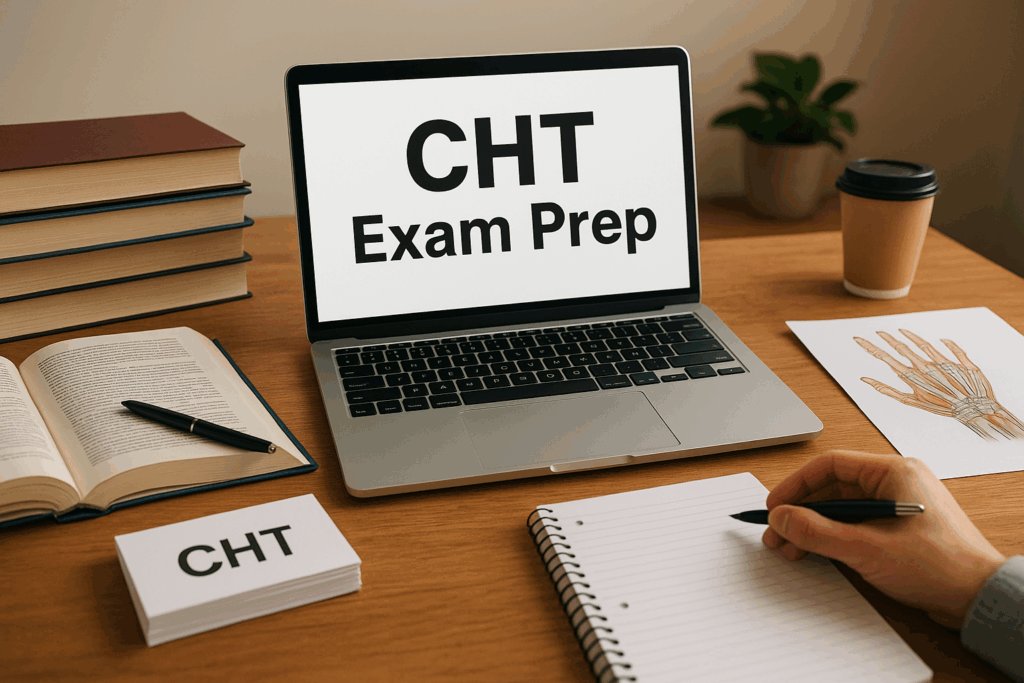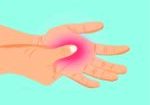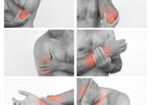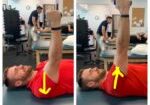Guía definitiva para la preparación del examen CHT: Estrategias comprobadas para el éxito como terapeuta de mano certificado
archivado en Sin categoría
Introducción al examen CHT
¿Qué es la Certificación CHT?
La credencial de Terapeuta de Mano Certificado (CHT) es una prestigiosa y avanzada certificación profesional para terapeutas ocupacionales y fisioterapeutas. Demuestra conocimientos especializados en rehabilitación de miembros superiores, incluyendo mano, muñeca, codo y hombro. Esta certificación es administrada conjuntamente por la Comisión de Certificación de Terapia de Mano (HTCC) y goza de reconocimiento internacional en el ámbito clínico de la terapia de mano.
¿Quién es elegible para tomar el examen CHT?
Para calificar para el examen CHT, un candidato debe:
- Sea un terapeuta ocupacional o fisioterapeuta autorizado.
- Tener al menos 3 años de experiencia clínica.
- Completar un mínimo de 4.000 horas de práctica directa de terapia manual.
Estos estrictos requisitos previos garantizan que sólo profesionales dedicados y experimentados intenten este desafiante examen.
¿Por qué convertirse en un terapeuta de mano certificado?
Convertirse en un CHT tiene numerosos beneficios:
- Reconocimiento y credibilidad profesional
- Mayor potencial salarial
- Oportunidades laborales ampliadas
- Toma de decisiones clínicas mejorada
- Mayor confianza del paciente y oportunidades de derivación
Esta certificación puede ser un punto de inflexión en su carrera de rehabilitación.

Comprender la estructura del examen
Formato y duración
El examen CHT consta de 200 preguntas de opción múltiple. Tendrás 4 horas Para completar el examen. El examen se administra en los centros de evaluación de Prometric o de forma remota, según su ubicación y disponibilidad.
Tipos de preguntas y dominios cubiertos
El examen cubre cuatro dominios de contenido principales:
- Dominios de la terapia de la mano
- Diagnósticos y afecciones
- Procedimientos médicos y quirúrgicos.
- Técnicas y herramientas de tratamiento
Espere escenarios basados en casos, preguntas basadas en diagramas y desafíos de toma de decisiones clínicas que pongan a prueba la aplicación del conocimiento en el mundo real.
Explicación del sistema de puntuación
Las puntuaciones se escalan entre 200 y 800. La puntuación exacta para aprobar varía ligeramente según el año y la modalidad del examen. Recibirá sus resultados entre 6 y 8 semanas después del examen.
Estableciendo una base sólida
Cómo establecer objetivos SMART para estudiar
Los objetivos SMART (específicos, medibles, alcanzables, relevantes y con plazos definidos) son clave para el estudio estructurado. Por ejemplo:
- “Completaré dos capítulos de mi manual de repaso cada semana”.
- “Terminaré 100 preguntas de práctica cada fin de semana”.
Creando un plan de estudios personalizado
Divide tu horario de estudio en objetivos semanales y mensuales según el tiempo que tengas hasta el examen. Incluye:
- Cobertura del material de estudio principal
- Días de prueba de práctica
- Semanas de descanso y revisión
Cronograma de estudio recomendado
| Cronología del estudio | Ideal para |
| 12 meses | Trabajar a tiempo completo con obligaciones familiares u otras |
| 6 meses | Disponibilidad moderada, carga de trabajo equilibrada |
| 3 meses | Preparación intensa y enfocada a tiempo completo |
Los mejores recursos de estudio para la preparación del examen CHT
Los mejores libros y manuales
- Rehabilitación de la mano y la extremidad superior por Skirven
- Intervención ortésica para la mano y la extremidad superior por Jacobs y Austin
- Fundamentos de la terapia de mano por Coppard y Lohman
Cursos en línea y seminarios web
- Cursos de preparación aprobados por la AOTA, como Preparación CHT por Hand Therapy Academy
- Canales de YouTube de profesionales de la rehabilitación
- Seminarios web y recursos de educación continua de ASHT
Técnicas de aprendizaje activo
Aprendizaje basado en casos
Aplique la teoría a la práctica revisando casos clínicos. Piense críticamente: ¿Cuál es el diagnóstico? ¿Qué intervenciones elegiría?
Enseñar conceptos a otros
Enseñar te obliga a comprender conceptos a fondo. Organiza mini sesiones de repaso con compañeros o colegas.
Preguntas de práctica y exámenes simulados
Realiza exámenes de práctica completos con tiempo limitado. Usa los resultados para ajustar tu enfoque.
Gestionar el tiempo y evitar el agotamiento
Consejos para programar el estudio semanal
- Bloquear de 30 a 60 minutos diarios.
- Reserva tiempo los fines de semana para inmersiones profundas.
- Incluya descansos y días para ponerse al día.
Cómo evitar la sobrecarga
Reconozca tempranamente las señales de agotamiento: fatiga, frustración y disminución de la retención. Ajuste el ritmo e integre estrategias de gestión del estrés.
Equilibrio entre descanso, nutrición y ejercicio
- Duerma entre 7 y 8 horas.
- Coma comidas equilibradas con nutrientes que estimulen el cerebro.
- Incluye movimiento o ejercicios ligeros en tu rutina.
Estrategias de memorización de conceptos clave
Mnemotécnicos y acrónimos
Ejemplos:
- “Algunos amantes prueban posiciones que no pueden soportar” – para el orden de los huesos del carpo.
- "DEFORMAR" – Etapas de la cicatrización de heridas.
Fragmentación y repetición espaciada
Divide los temas en secciones fáciles de comprender y revísalos con frecuencia. Usa tarjetas didácticas para la repetición espaciada.
Diagramas visuales y mapas mentales
Dibuje las trayectorias nerviosas, las zonas tendinosas y los diseños ortopédicos. Los estudiantes visuales se benefician especialmente de esta técnica.
Unirse a un grupo de estudio o foro
Beneficios del aprendizaje entre pares
- Responsabilidad
- Intercambio de ideas
- Apoyo emocional
Las mejores comunidades de estudio de CHT en línea
- r/terapia ocupacional de Reddit
- Grupos de Facebook como “CHT Exam Study Group”
- Comunidades de Discord de OT/PT
Encontrar un compañero de estudio
Colabora con alguien que también se esté preparando para el examen. Pueden hacerse preguntas mutuamente y compartir ideas.
Estrategia de prueba de práctica
Cómo analizar tus errores
Después de cada prueba de práctica:
- Categorizar los errores por tema.
- Revisa y vuelve a aprender ese concepto.
- Vuelva a realizar la prueba después de algunas semanas.
- Utilice las categorías de prueba posterior de Preparación para el examen CHT de Hand Therapy Academy
Gestión del tiempo durante los exámenes
- No dedique más de 1,5 minutos a cada pregunta.
- Marque los difíciles y vuelva a revisarlos con el tiempo restante.
Simulación de condiciones reales de examen
Siéntate en un escritorio sin distracciones. Usa un cronómetro. Toma descansos solo en los momentos designados, imitando el comportamiento real de un examen. Usa el Prueba de práctica CHT Simulador que contiene 200 preguntas de pruebas reales (hay tres versiones de la prueba disponibles) y proporciona retroalimentación detallada con justificación y referencias para todas las respuestas.
El día antes del examen CHT
Qué llevar
Prepare su maleta con anticipación y asegúrese de que incluya:
- Identificación con fotografía emitida por el gobierno
- Correo electrónico de confirmación de Prometric o carta de admisión a la prueba
- Botella de agua desechable (si está permitido)
Confirme la ubicación de la prueba y cuánto tiempo le llevará llegar allí.
Cómo calmar la ansiedad previa a los exámenes
- Medita durante 5 a 10 minutos usando aplicaciones como Headspace o Calm.
- Limite el consumo de cafeína y procure tener un sueño reparador.
- Evite estudiar a toda prisa; un repaso ligero es mejor para la retención.
Estrategia de revisión final
Concentrarse en:
- Tarjetas didácticas y notas rápidas
- Resúmenes de alto rendimiento
- Temas que siempre se pasan por alto en los exámenes de práctica
No introduzca material nuevo en el último minuto: puede aumentar el estrés sin mejorar el rendimiento.
Consejos para el día del examen para tener éxito
Llegada temprana y registro
Planifique llegar al menos 30–45 minutos antesLos centros de pruebas tienen protocolos estrictos:
- No se permiten teléfonos ni relojes inteligentes.
- Generalmente se proporcionan taquillas.
- Es posible que se le someta a un control de seguridad.
Gestionar el estrés de los exámenes en tiempo real
Si comienza a sentirse ansioso durante la prueba:
- Toma 3 respiraciones profundas
- Estira los brazos y el cuello discretamente.
- Cierra los ojos durante 30 a 60 segundos para evitar la fatiga visual.
Mantenerse concentrado y alerta
- Utilice el temporizador en pantalla para controlar su ritmo.
- Tome los descansos permitidos con prudencia
- No te detengas en preguntas difíciles: marca y sigue adelante.
Qué hacer después del examen
Entendiendo las puntuaciones preliminares
En algunos centros, es posible que recibas una aprobado/reprobado preliminar Notificación. El informe oficial de resultados llegará por correo electrónico o a su cuenta de HTCC en unas semanas.
Pasos a seguir si pasas
- ¡Celebra tu logro!
- Actualice sus credenciales
- Informe a su empleador y a su red
- Considere ser mentor de otros que se preparan para el examen.
Qué hacer si no apruebas
- Espere un desglose de su puntuación
- Reflexionar sobre áreas de mejora
- Tómese un breve descanso antes de reiniciar la preparación.
- Puedes volver a realizar el examen en 6 meses
Historias de éxito de CHT reales
Lo que les funcionó
- “Empecé con 6 meses de antelación y estudiaba 5 días a la semana”.
- Practicar la prueba real en el sitio web de HTA fue un gran cambio.
- “Las tarjetas didácticas diarias me ayudaron a dominar las inervaciones nerviosas”.
Rutinas de estudio compartidas
- Reseñas de madrugada
- Exámenes de práctica semanales
- Resúmenes dominicales del aprendizaje semanal
Lecciones aprendidas
- “No descuides las ortesis, incluso si crees que las conoces”.
- “Invierta en recursos de calidad: ahorrará tiempo”.
- “Haz que los días de descanso formen parte de tu plan”.
Los principales errores que se deben evitar durante la preparación del examen CHT
Dilación
Retrasar tu horario de estudio aumenta la ansiedad y disminuye la retención. Empieza temprano y sé constante.
Ignorar las áreas débiles
Centrarse solo en los temas favoritos deja lagunas. Identifica tus debilidades con anticipación mediante exámenes de práctica.
No realizar suficientes exámenes de práctica
Los exámenes de práctica desarrollan la resistencia y ayudan a simular las condiciones de la prueba. Intenta completar al menos 3 exámenes simulados completos.
Preguntas frecuentes sobre la preparación para el examen CHT
1. ¿Qué tan difícil es el examen CHT?
El examen CHT es desafiante debido a la amplitud del contenido y al razonamiento clínico que implica. Sin embargo, con una preparación constante y enfocada, muchos terapeutas aprueban a la primera.
2. ¿Cuál es la tasa de aprobación?
La tasa de aprobación generalmente ronda los 60–70%Dependiendo del año, la preparación es crucial.
3. ¿Cuánto tiempo debo dedicar al estudio?
La mayoría de los candidatos estudian entre 150–300 horas De 3 a 12 meses. El tiempo de estudio depende de la experiencia y del tiempo disponible.
4. ¿Existen cursos preparatorios que garanticen resultados?
Ningún curso puede garantizar un aprobado, pero los de buena reputación como Curso de preparación para el CHT by Hand Therapy Academy ofrece una valiosa estructura y apoyo.
5. ¿Puedo trabajar a tiempo completo y aún así aprobar el examen CHT?
¡Sí! Muchos candidatos exitosos compaginaron sus trabajos de tiempo completo con sus estudios creando planes estructurados y aprovechando los fines de semana o las primeras horas de la mañana.
6. ¿Con qué frecuencia puedo volver a realizar el examen?
Puede volver a tomar el examen CHT cada 6 meses, hasta tres veces dentro de un período de 3 años a partir de la elegibilidad inicial.
Conclusión: Puedes aprobar el examen CHT con confianza
Prepararse para el examen CHT es un proceso que no solo desarrolla conocimientos, sino también confianza clínica. Al crear un plan inteligente, utilizar los mejores recursos y priorizar su salud mental y física, Puedes aprobar el examen CHT absolutamente.
Recuerde, cada terapeuta de manos certificado comenzó justo donde usted está ahora: con preguntas, dudas y determinación.
Mantente enfocado. Sé constante. Y lo más importante: cree en tu capacidad para triunfar.
Más para leer
¿Cuánto dolor debe tener un paciente durante y después de la terapia?
¿Cuánto dolor debe tener un paciente durante y después de la terapia? Como todos sabemos el dolor es algo subjetivo. Puede resultar difícil determinar cuánto dolor debe experimentar un paciente con el tipo de lesión, así como con el tipo de intervención terapéutica y tratamiento del dolor en las manos. El dicho de “sin dolor, no…
Leer másEficacia de la rehabilitación con realidad virtual tras una lesión de la médula espinal: una revisión sistemática
De Araújo, AVL, Neiva, JFDO, Monteiro, CBDM y Magalhães, FH (2019). Eficacia de la rehabilitación con realidad virtual después de una lesión de la médula espinal: una revisión sistemática. BioMed Research International, 2019(1), 7106951. https://doi.org/10.1155/2019/7106951 Eficacia de la rehabilitación con realidad virtual después de una lesión de la médula espinal Emilee Sanders, OTS The Skinny: La realidad virtual (RV)…
Leer más¿Cuál es la incidencia de molestias musculoesqueléticas en el codo, el hombro y el cuello después de lesiones en la mano y el antebrazo?
Winiarski, LM, Livoni, JD, Madsen, PV, Rathleff, MS y Larsen, P. (2021). Quejas musculoesqueléticas concurrentes en codos, hombros y cuello después de lesiones o afecciones comunes en manos y antebrazos: un estudio transversal entre 600 pacientes. Revista de terapia de manos: revista oficial de la Sociedad Estadounidense de Terapeutas de Manos, 34(4), 543–548. https://doi.org/10.1016/j.jht.2020.05.002 La Flaca: La…
Leer másAumento del rango de movimiento del hombro mejorando el ritmo escapulohumeral
El ritmo escapulohumeral es a menudo el componente clave en el tratamiento de las afecciones del hombro y la razón de la falta de amplitud total de movimiento del hombro. Esto también puede ser un componente crítico para prevenir afecciones del hombro durante la rehabilitación de otras afecciones de las extremidades superiores, como fracturas del radio distal, lesiones de tendones y lesiones de codo. Ritmo escapulohumeral...
Leer más¡Regístrese para recibir actualizaciones directamente en su bandeja de entrada!
Regístrese con nosotros y le enviaremos publicaciones periódicas en el blog sobre todo lo relacionado con la terapia de manos, avisos cada vez que subamos nuevos videos y tutoriales, junto con folletos, protocolos y otra información útil.






